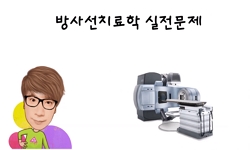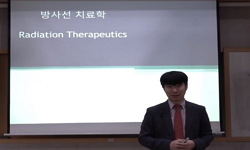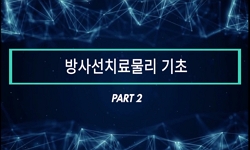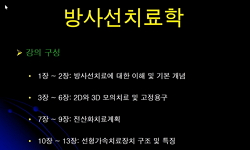목 적: 전국의 각 병원 방사선종양학과에서 1998년과 1999년도의 2년간 직장암 진단 하에 수술 후 방사선치료를 시행한 환자들의 자료를 분석하여 한국인 직장암 환자의 전체적인 구성과 특성...
http://chineseinput.net/에서 pinyin(병음)방식으로 중국어를 변환할 수 있습니다.
변환된 중국어를 복사하여 사용하시면 됩니다.
- 中文 을 입력하시려면 zhongwen을 입력하시고 space를누르시면됩니다.
- 北京 을 입력하시려면 beijing을 입력하시고 space를 누르시면 됩니다.


직장암의 방사선치료에 대한 Patterns of Care Study : 1998~1999년도 수술 후 방사선치료 환자들의 특성 및 치료내용에 대한 분석결과 = Postoperative Radiotherapy in the Rectal Cancers Patterns of Care Study for the Years of 1998∼1999
한글로보기https://www.riss.kr/link?id=A82296892
-
저자
김종훈(Jong Hoon Kim) ; 오도훈(Do Hoon Oh) ; 강기문(Ki Moon Kang) ; 김우철(Woo Cheol Kim) ; 김원동(Won Dong Kim) ; 김정수(Jung Soo Kim) ; 김준상(June Sang Kim) ; 김진희(Jin Hee Kim) ; 길학재(Hak Jae Kil) ; 서창옥(Chang Ok Suh) ; 손승창(Seung Chang Sohn) ; 안용찬(Yong Chan Ahn) ; 양대식(Dae Sik Yang) ; 오원용(Won Yong Oh) ; 이경자(Kyung Ja Lee) ; 전미선(Mison Chun) ; 조홍래(Hong Rae Cho) ; 최두호(Doo Ho Choi) ; 최영민,최일봉,김일한
- 발행기관
- 학술지명
- 권호사항
-
발행연도
2005
-
작성언어
-
-
주제어
직장암 ; 방사선치료 ; 치료형태 ; Rectal cancer ; Patterns of Care Study ; Radiotherapy
-
KDC
510
-
등재정보
KCI등재후보,SCOPUS
-
자료형태
학술저널
- 발행기관 URL
-
수록면
22-31(10쪽)
-
KCI 피인용횟수
1
- 제공처
-
0
상세조회 -
0
다운로드
부가정보
국문 초록 (Abstract)
목 적: 전국의 각 병원 방사선종양학과에서 1998년과 1999년도의 2년간 직장암 진단 하에 수술 후 방사선치료를 시행한 환자들의 자료를 분석하여 한국인 직장암 환자의 전체적인 구성과 특성을 파악하고 치료 내용에 대한 현황 을 조사하여 국가적인 자료로 활용하고자 하였다. 대상 및 방법: 대상 환자의 기준은 1998년부터 1999년 사이에 직장 선암의 수술 후 방사선치료를 시작한 환자로서 육안적 잔여 병소 없이 근치적으로 수술이 이루어진 환자를 대상으로 했으며 직장암이외의 다른 암의 병력이 있거나 과거에 골반에 방사선치료를 받은 병력이 있는 환자는 제외하였다. 각 병원별 치료환자 수에 비례하여 해당 병원의 입력 환자수를 정한 후 PCS 본부의 무작위 추출 과정을 통하여 입력할 환자를 선정하였다. 선정된 환자는 웹 기반 PCS시스템을 이용하여 각 병원에서 직접 자료를 입력하였다. 결 과: 전국의 19개 병원에서 총 309명의 환자 자료가 입력되었다. 남녀 성비는 59:41이었으며 하단연 기준 종양의 위치는 항문연 6 cm 이내가 46%로 가장 많았다. 수술 전 CEA검사는 79%에서 시행되었으며 이 중 43%에서 6 ng/ml 이상인 것으로 나타났다. 수술 전 직장내초음파검사는 50명(16%)에서만 시행되었으며 CT 등을 이용한 임상적 병기판정은 274명에서 가능하였으며 stage II가 32%, III가 48%를 차지하였다. 수술 후 조직소견에 의한 병리학적 병기는 stage II가 34%, III 가 63%였다. 수술의 방법은 복회음부절제수술이 38%, 저위전방절제술이 59%였으며, 5명의 환자에서는 원격전이가 있었으나 원발병소와 함께 절제되었다. 절제연에서 종양세포가 발견된 경우가 13예였으며, 수술 후 항암화학치료를 받은 환자는 전체의 91%였고 80%의 환자는 정맥주사, 9%의 환자는 경구항암제를 투여한 것으로 나타났다. 항암제는 5FU와 leucovorine의 조합이 212명(69%)으로 가장 많았고 시행횟수는 6회가 140예(45%)로 가장 많았다. 환자의 치료자세는 복와위자세가 251예(81.2%)로 나타났고, 치료 조사야 수는 박스형 4문조사가 75예(24.3%)로 가장 많았으며 3문조사(후방-양측방)가 201예(65.0%)로 그 뒤를 이었다. 치료 시 소장을 조사야 외부로 이동시키기 위한 장치나 소변을 참는 등의 조치는 40.1%의 환자에서 시행되었다. 선량의 처방점은 회전중심점이 140예(45.3%), 등선량곡선이 123예로 비슷하게 나타났다. 실제 치료된 조사선량은 180∼7,740 cGy의 분포를 보였으며 목표선량의 90%이상이 투여된 경우가 287예(92.9%)였다. 결 론: 전국 각 병원들의 환자를 종합하여 관찰된 내용은 문헌상 권장되는 것과 비슷한 결과를 보였으며 수술의 범위와 항암화학치료의 방법은 병원에 따라 비교적 다양한 형태로 시행되고 있는 것으로 나타났다. 각 병원의 방사선치료 내용은 환자의 상태에 따라 결정되는 탓에 방사선량과 조사야의 선택에 있어 차이가 관찰되었으며 처방된 치료에 대한 환자의 순응도는 90% 이상으로 높게 나타났다.
다국어 초록 (Multilingual Abstract)
Purpose: To conduct a nationwide survey on the principles in radiotherapy for rectal cancer, and produce a database of Korean Patterns of Care Study. Materials and Methods: We developed web-based Patterns of Care Study system and a national survey was...
Purpose: To conduct a nationwide survey on the principles in radiotherapy for rectal cancer, and produce a database of Korean Patterns of Care Study. Materials and Methods: We developed web-based Patterns of Care Study system and a national survey was conducted using random sampling based on power allocation methods. Eligible patients were who had postoperative radiotherapy for rectal cancer without gross residual tumor after surgical resection and without previous history of other cancer and radiotherapy to pelvis. Data of patients were inputted to the web based PCS system by each investigators in 19 institutions. Results: Informations on 309 patients with rectal cancer who received radiotherapy between 1998 and 1999 were collected. Male to female ratio was 59:41, and the most common location of tumor was lower rectum (46%). Preoperative CEA was checked in 79% of cases and its value was higher than 6 ng/ml in 32%. Pathologic stage were I in 1.6%, II in 32%, III in 63%, and IV in 1.6%. Low anterior resection was the most common type of surgery and complete resection was performed in 95% of cases. Distal resection margin was less than 2 cm in 30%, and number of lymph node dissected was less than 12 in 31%. Chemotherapy was performed in 91% and most common regimen was 5-FU and leucovorine (69%). The most common type of field arrangement used for the initial pelvic field was the four field box (Posterior-Right-Left) technique (65.0%), and there was no AP-PA parallel opposing field used. Patient position was prone in 81.2%, and the boost field was used in 61.8%. To displace bowel outward, pressure modulating devices or bladder filling was used in 40.1%. Radiation dose was prescribed to isocenter in 45.3% and to isodose line in 123 cases (39.8%). Percent delivered dose over 90% was achieved in 92.9%. Conclusion: We could find the Patterns of Care for the radiotherapy in Korean rectal cancer patients was similar to that of US national survey. The type of surgery and the regimen of chemotherapy were variable according to institutions and the variations of radiation dose and field arrangement were within acceptable range.
참고문헌 (Reference)
1 "cause of death in 2001" 2002
2 "Treatment systems guidelines for primary rectal cancer from the 1996 Patterns of Care Study" 41 : 21-27, 1998
3 "Treatment planning structure and process in the United States: a "Patterns of Care" study" 32 : 255-262, 1995
4 "Treatment planning for adenocarcinoma of the rectum and sigmoid a patterns of care study. PCS Committee" 37 : 305-311, 1997
5 "The National Cancer Data Base report on patterns of care for adenocarcinoma of the rectum" 83 : 2408-2418, 1998
6 "Survey on radiotherapy protocols for the rectal cancers among the Korean radiation oncologists in 2002 for the development of the Patterns of Care Study of radiation therapy" 21 : 44-53, 2003
7 "Suggestion of optimal radiation fields in rectal cancer patients after surgical resection for the development of the Patterns of Care Study" 21 : 183-191, 2003
8 "Randomized trial of postoperative adjuvant therapy in stage II and III rectal cancer to define the optimal sequence of chemotherapy and radiotherapy:A preliminary report" 20 : 1751-1758, 2002
9 "Radiation therapy for rectosigmoid and rectal cancer results of the 1992-1994 Patterns of Care process survey" 16 : 2542-2547, 1998
10 "Preoperative versus postoperative chemoradiotherapy for rectal cancer" 351 : 1731-1740, 2004
1 "cause of death in 2001" 2002
2 "Treatment systems guidelines for primary rectal cancer from the 1996 Patterns of Care Study" 41 : 21-27, 1998
3 "Treatment planning structure and process in the United States: a "Patterns of Care" study" 32 : 255-262, 1995
4 "Treatment planning for adenocarcinoma of the rectum and sigmoid a patterns of care study. PCS Committee" 37 : 305-311, 1997
5 "The National Cancer Data Base report on patterns of care for adenocarcinoma of the rectum" 83 : 2408-2418, 1998
6 "Survey on radiotherapy protocols for the rectal cancers among the Korean radiation oncologists in 2002 for the development of the Patterns of Care Study of radiation therapy" 21 : 44-53, 2003
7 "Suggestion of optimal radiation fields in rectal cancer patients after surgical resection for the development of the Patterns of Care Study" 21 : 183-191, 2003
8 "Randomized trial of postoperative adjuvant therapy in stage II and III rectal cancer to define the optimal sequence of chemotherapy and radiotherapy:A preliminary report" 20 : 1751-1758, 2002
9 "Radiation therapy for rectosigmoid and rectal cancer results of the 1992-1994 Patterns of Care process survey" 16 : 2542-2547, 1998
10 "Preoperative versus postoperative chemoradiotherapy for rectal cancer" 351 : 1731-1740, 2004
11 "Patterns of care in radiation oncology" 15 : 303-312, 1999
12 "Outcomes of patients receiving radiation for carcinoma of the rectum Results of the 1988-1989 Patterns of Care Study" 86 : 1952-1958, 1999
13 "National average for the process of radiation therapy in Japan by Patterns of Care Study" 29 : 209-213, 1999
14 "Evaluation and treatment of patients receiving radiation for cancer of the rectum or sigmoid colon in the United States:results of the 1988-1989 Patterns of Care Study process survey" 12 : 954-959, 1994
15 "AJCC Cancer Staging Manual. 5th Ed" Lippincott-Raven 83-90, 1997
동일학술지(권/호) 다른 논문
-
비인강암에서 방사선치료의 예측인자로써 Ku70 발현의 의의
- 대한방사선종양학회
- 송시열(Si Yeol Song)
- 2005
- KCI등재후보,SCOPUS
-
비인강암 환자의 예후에서 2-[18F] Fluoro-2-Deoxy-D-Glucose PET 영상에서 계산되는 Standardized Uptake Value의 의의
- 대한방사선종양학회
- 이상욱(Sang-wook Lee)
- 2005
- KCI등재후보,SCOPUS
-
T1a 병기 성문암의 방사선 치료 후 음성에 관한 연구
- 대한방사선종양학회
- 이준규(Joon-Kyoo Lee)
- 2005
- KCI등재후보,SCOPUS
-
- 대한방사선종양학회
- 전미선(Mi Son Chun)
- 2005
- KCI등재후보,SCOPUS
분석정보
인용정보 인용지수 설명보기
학술지 이력
| 연월일 | 이력구분 | 이력상세 | 등재구분 |
|---|---|---|---|
| 2024 | 평가예정 | 해외DB학술지평가 신청대상 (해외등재 학술지 평가) | |
| 2021-01-01 | 평가 | 등재학술지 선정 (해외등재 학술지 평가) |  |
| 2020-12-01 | 평가 | 등재후보로 하락 (해외등재 학술지 평가) |  |
| 2015-01-01 | 평가 | SCOPUS 등재 (기타) |  |
| 2013-01-01 | 평가 | 등재후보 1차 FAIL (등재후보1차) |  |
| 2012-04-01 | 평가 | 등재후보로 하락 (기타) |  |
| 2012-01-01 | 평가 | 등재후보학술지 유지 (기타) |  |
| 2011-12-30 | 학회명변경 | 영문명 : The Korean Society For Therapeutic Radiology And Oncology -> The Korean Society for Radiation Oncology |  |
| 2011-08-22 | 학술지명변경 | 한글명 : 대한방사선종양학회지 -> Radiation oncology journal 외국어명 : The Journal of the Korean Society for Therapeutic Radiology and Oncology -> Radiation oncology journal |  |
| 2009-01-01 | 평가 | 등재 1차 FAIL (등재유지) |  |
| 2006-01-01 | 평가 | 등재학술지 선정 (등재후보2차) |  |
| 2005-01-01 | 평가 | 등재후보 1차 PASS (등재후보1차) |  |
| 2004-01-01 | 평가 | 등재후보학술지 유지 (등재후보1차) |  |
| 2002-01-01 | 평가 | 등재후보학술지 선정 (신규평가) |  |
학술지 인용정보
| 기준연도 | WOS-KCI 통합IF(2년) | KCIF(2년) | KCIF(3년) |
|---|---|---|---|
| 2016 | 0.31 | 0.31 | 0.25 |
| KCIF(4년) | KCIF(5년) | 중심성지수(3년) | 즉시성지수 |
| 0.23 | 0.22 | 0.864 | 0.05 |




 ScienceON
ScienceON 스콜라
스콜라






